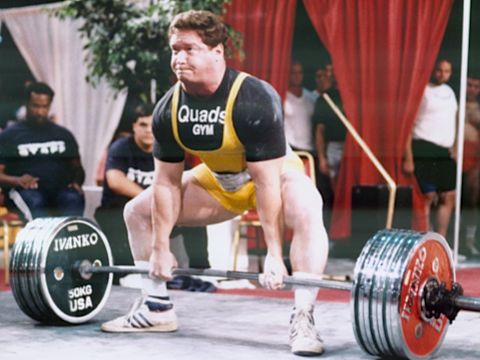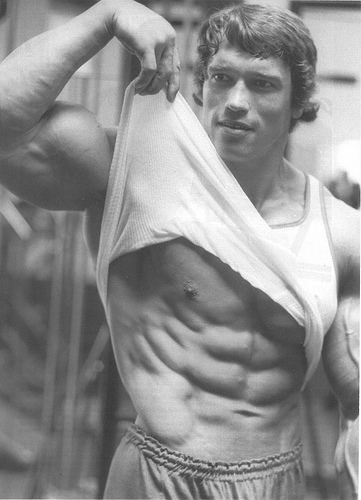Okay, I have been meaning to write this post ever since I first started my blog.
Everyone wants to know how many reps and how many sets they should perform at the gym. It seems to be the million-dollar question…well, it all comes down to what YOUR goals are. Are you looking to get stronger? More powerful? Get bigger? Enhance your muscular endurance? Everyone has different fitness goals, so it really depends on what you are looking to achieve.
Let me break it down for you, but before I begin, I want you to understand what 1 RM is.
1 RM, or 1 REP MAX is the maximum amount of weight you can lift in JUST ONE REPETITION. To calculate your 1 RM you need to use a complicated mathematical formula, BUT lucky for technology and the good old internet these days, you can use a website to figure it out.
Okay, now that you know what 1 RM is, I can begin explaining different training types:
STRENGTH:
Strength is basically the ability to move an object with force generated from your muscles; speed and distance does not matter here.
You will want to perform 6 or fewer repetitions at about 85% of your 1 RM.
You will want to rest for about 2-5 minutes between sets, in order to fully relax your muscle fibers, and allow them to recover before hitting the iron again.
POWER:
Power is how fast and how heavy you can lift. It is measured by this formula: Work = Force X Distance.
You will perform 1 to 2 repetitions at about 80-90% of your 1 RM, allowing for 2 -5 minutes rest between sets.
HYPERTROPY:
This is the category is which most gym goers fall into. “Most” people go to the gym to get toned and/or bigger, more muscular.
Hypertrophy is the increase in MUSCLE SIZE.
In order to achieve hypertrophy, one must perform 6 to 12 repetitions at 67-85% of their 1 RM.
You can even notice the difference in physique when you look at a power lifter and a bodybuilder. Power lifters are stronger but not as chiseled or cut as a bodybuilder. All depends on what you’re looking to gain, physically.
You will want to rest for 30-90 seconds between sets. The reason the rest period is so short in hypertrophy, is because you want to completely exhaust your muscle fibers, inhibiting their recovery, so that new muscle fibers will be recruited causing your muscles fibers to increase in size.
MUSCULAR ENDURANCE:
Endurance is basically the ability for your muscles to repeatedly contract against some sort of resistance. Your goal is to lift 12 or more repetitions at 67% of your 1 RM. Since you want your heart rate to be elevated throughout, you will rest 30 seconds or less.
Okay, so now you know how much weight to lift, how many reps, and how much rest to provide between your sets; however, you still need to know how many sets to perform. This all depends on your conditioning and level of physical ability:
Beginners will benefit from performing one set of each exercise, on each muscle group. The reason why beginners only perform one set is so that they can allow their neuromuscular system to adapt to this new stimulus; you do not want to put it under shock and risk injury or trauma.
Intermediate and advanced trainers have more leeway when designing their programs; performing 2-5 sets on all muscle groups.
Also seniors (over the age 65) and youth should refrain from performing more than 12 sets per exercise routine.
And everyone should WARM & COOL DOWN before and after they begin their routine. Remember your body is a temple; let’s not try to hurt it!
And of course, last but not least, try to not work the same muscles within 48-72 hours. Allow your muscles to fully rest and recover before applying load on them again; you may risk overtraining, which is a psycho-physiological response and it is NO FUN! It is counterproductive and can be very frustrating if you are busting your butt to achieve your health & fitness goals.
This is where your exercise routines get fun! You can now decide whether you want to perform total body routines, 2-day splits, 3-day splits, 4-day splits, 5-day splits, heck, even 6- or 7-day splits; all depending on how much time and effort you have to spare for the gym.
I personally like to perform 2- or 3-day splits. Usually combining agonist (muscle that performs movement) and antagonist (muscle which works against the agonist) muscle groups. So, for an example, if I am working my arms, my biceps will be agonist, while my triceps will be antagonist. Or my chest is agonist and back is antagonist. Get it?
Pretty straight forward eh? Now that you know the basics of setting up a personalized exercise routine, you get jump right into it or tweek your existing routine!
Also keep in mind that you can perform a combination of different training types to achieve more than one fitness goal. Also, remember to perform all exercises using full range of motion (ROM). By this I mean, you should use full concentric (shortening of muscle) and full eccentric (lengthening of muscle) movements. However, there are some exceptions to that; I will discuss that on another day.
Hope this was helpful!


